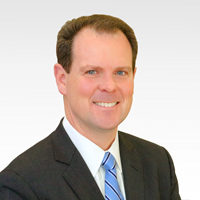- November 14, 2019
- Len Riley
- Reading Time: 6 minutes

SAP has had a rash of exits over the past year, culminating with the departure of Bill McDermott. In April, Rob Enslin announced he’d be leaving after 27 years, following other recent high-profile departures including Bjoern Goerke, chief technology officer and head of SAP’s cloud platform business, and Bernd Leukert, the board executive who ran global service and support.
Fast forward to this week and you’ll see that the next generation has taken the mantel. SAP used Capital Markets Day to showcase their new management team. Capital Markets Day is SAP’s forum to lay out the details of new initiatives to accelerate operational excellence and value creation. It is also a day to get Wall Street excited about SAP. It certainly was fortuitous to schedule this Special Capital Markets Day for November, when clearly, they did not know the breadth of changes they would be rolling out back in April. Could it have been the perfect design or just luck? I’ll give my impressions of the new team with a few interesting tidbits if I read between the lines.
Jennifer Morgan is a Strong Leader
Although SAP has reverted to a Co-CEO structure, Jennifer Morgan clearly emerged as the executive who is running the show. Jennifer commanded the room and controlled the message – two extremely important feats for SAP at this juncture. Jennifer focused on the cloud business and cross-selling and upselling cloud solutions. She has a great story and value proposition, provided SAP can meet its commitment to cross-platform business process integration. It is clear she is going to bring a high degree of precise decision-making to the organization and a culture of accountability.
Jennifer repeated SAP’s customer-first mantra, and I, for one, am believing it. Her theme was that SAP’s North Star is the customer first. She was surprisingly candid, indicating that SAP has historically lacked prioritization and focus, with statements like, “If everything is a priority then there are no priorities,” and “I’m prepared to make the tough choices,” making specific reference to the need to break down organizational silos and move redundancies. The culture will be more disciplined, results-driven, and accountable.
SAP’s Management Pillars
Also in step was SAP’s CFO, Luka Mucic, who is clearly in control of SAP’s financials and has the trust of Wall Street. His financial discipline and optimization are showing. Luka provided a very transparent breakdown of the SAP revenue streams, operating margins and aspirations for each line of business, with an unexpected emphasis on SAP’s services business. Customers should continue to expect a heavy push of value assurances and packaged service solutions.
SAP Qualtrics CEO, Ryan Smith, clearly has passion. Earlier this year, the Qualtrics acquisition was completed and there was no question that SAP was betting on the successful Qualtrics CEO when they spent $8B for the company. Ryan’s willingness to align to the SAP culture remains to be seen, continually using phrases like, “Partnering with SAP is great,” and going so far as to use his own slide template. Certainly these are small nuances, however, it is an approach that contrasted to the rest of the SAP team.
Adaire Fox-Martin, who took sole responsibility as President of Global Customer Operations (GCO) in April took the stage to outline SAP’s sales strategy, which focused heavily on organizational and operational effectiveness. While another sales reorg was not specifically mentioned, get ready for a realignment (again) of the sales organization. Based on Adaire’s comments you can anticipate a dedicated industry account executive with broad responsibilities for the entire SAP suite of products and less quota carrying reps competing for the same wallet. Also, Adaire introduced the role of the Customer Success Executive to ensure customers remain on-track post-contract signature. She also focused heavily on the services and tools SAP is bringing to its sales organization to accelerate the migration of ECC customers to S/4. Adarie is clearly an operationally focused executive and is committed to bring enabling capabilities to the SAP sales team. That said, the global nature of her role will certainly challenge her ability to develop deep customer relationships which will be critical, especially in light of the departures of McDermott and Enslin and the new responsibilities of Morgan.
Delivering on Business Process Integration: “Best of Breed” and “Best of Suite”
While we are all familiar with best of breed applications – single solutions that are the best in their category (like CRM, Accounting, HR, etc.) — SAP is smart to shift our thinking to be viewed as a best of suite supplier. With S/4 as the hub, using their other solutions, like Qualtrics, Ariba, SuccessFactors, Fieldglass, etc., the single vendor integration would make SAP a truly differentiated offering. SAP touts that customers can leverage the synergies across their portfolio of products, as they highlighted the Qualtrics and SuccessFactors combination with success stories.
With 70% of SAP ERP customers NOT using SAP cloud solutions yet and many companies planning their transition from ECC to S/4, the opportunity is huge. SAP indicated that 12,000 customers are licensed for S/4HANA, and they provided additional insight when pressed, that 60% of those licensed customers are either underway with their deployment or have definitive plans to commence the migration. Unfortunately, SAP did not disclose (or was not pressed to disclose) its current position with respect to the pending de-support of ECC in 2025, so the speculation continues.
For those customers who have already made the cloud transition, the average purchase is two solutions along with S/4, and Ariba and SuccessFactors have been the most common. Aside from these cloud migration situations, SAP will focus on converting their customers now using point solutions, like Workday and Salesforce, to convert to SAP upon their renewals. SAP still has some work to do on full solution integration and full business process flow integration here. If workflows aren’t integrated, then it’s not a suite.
Could this be an advantage for customers? The answer is yes again. SAP can leverage the large market opportunity of those planning to move from ECC to S/4 as well as those having snags with the renewals from their point solution vendors, like Workday and Salesforce. SAP is coming at those competitive vendors who previously beat them to market, and they could make it worth your while.
What About C/4HANA?
Announced last month, Bob Stutz, who was most recently the head of Salesforce’s Marketing Cloud, is heading back to SAP as president of customer experience. Stutz’s career with enterprise software companies also included stints at Siebel Systems, SAP, and Microsoft. The announcement of this long-time industry veteran returning to a lead role at SAP indicates there is more to come in the CRM space as he gets his arms around C/4HANA and its Hybris predecessor. Hybris and C/4HANA definitely need a shot in the arm.
SAP Embraces Microsoft and HEC is Far from Dead
HEC (HANA Enterprise Cloud) is SAP’s infrastructure offering, providing what Microsoft Azure, AWS, and Google Cloud provide. In May, SAP made an effort to bring clarity to the market via Embrace, SAP’s collaboration program with Microsoft Azure, Amazon Web Services (AWS) and Google Cloud Platform (GCP), as well as global strategic service partners (GSSPs). Last month, SAP announced that they’re doubling down on their relationship with Microsoft – betting big on Microsoft as their preferred cloud partner. While they reiterated their commitment to provide a reference architecture for Alibaba, GCP and AWS, to make this decision, SAP:
- Conducted an extensive assessment of their client’s intended direction and their potential pipeline of opportunities
- Found Microsoft’s global reach and sales distribution channel attractive
- Viewed the partnership as a key accelerator to SAP cloud platform adoption and ECC to S/4 migrations.
SAP reiterated its commitment to provide a reference architecture for Alibaba, GCP and AWS.
But even though HEC makes up a small part of their revenues and has small margins, responding to questions about whether they’ll even keep it, SAP restated their long-term commitment to HEC and confirmed they’re in it to stay. Despite the fact that some of their clients do not like the cost or the SLA’s of HEC, those who have gone all-in with SAP will be glad to hear this news. It still remains to be seen if those customers stay with SAP for HEC.
Watch for Product Divestitures
CFO Luka Mucic indicated that certain assets obtained as part of SAP acquisitions would be spun off. Without giving examples, he indicated that those assets that are not strategic to SAP could have a better home with a partner or another company, and we will see this in the next 6-9 months. Mucic indicated that he already had a list of spin-off candidates, so those solutions not part of the SAP core could be affected. When asked by Wall Street if there would be any material revenue impact to SAP, he quelled their fears by indicating the impact to SAP would be very small and non-strategic. But could the impact be potentially disruptive to individual customers? The answer is yes.
On a Final Note
In the past, SAP Capital Markets Day was very sales- and marketing-oriented, where McDermott pushed his vision and aimed to get Wall Street excited about it. The new regime brings with it more of an execution-oriented and focused discussion. I am excited to see where the path leads.
Comment below, follow me on Twitter @lpriley6, find my other UpperEdge blogs, and follow UpperEdge on Twitter and LinkedIn. Learn more about our SAP Commercial Advisory Services.
